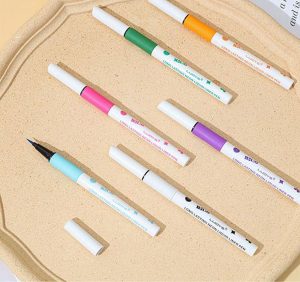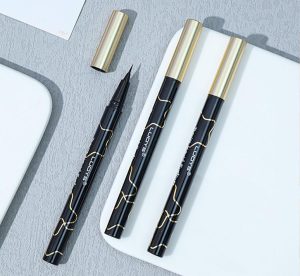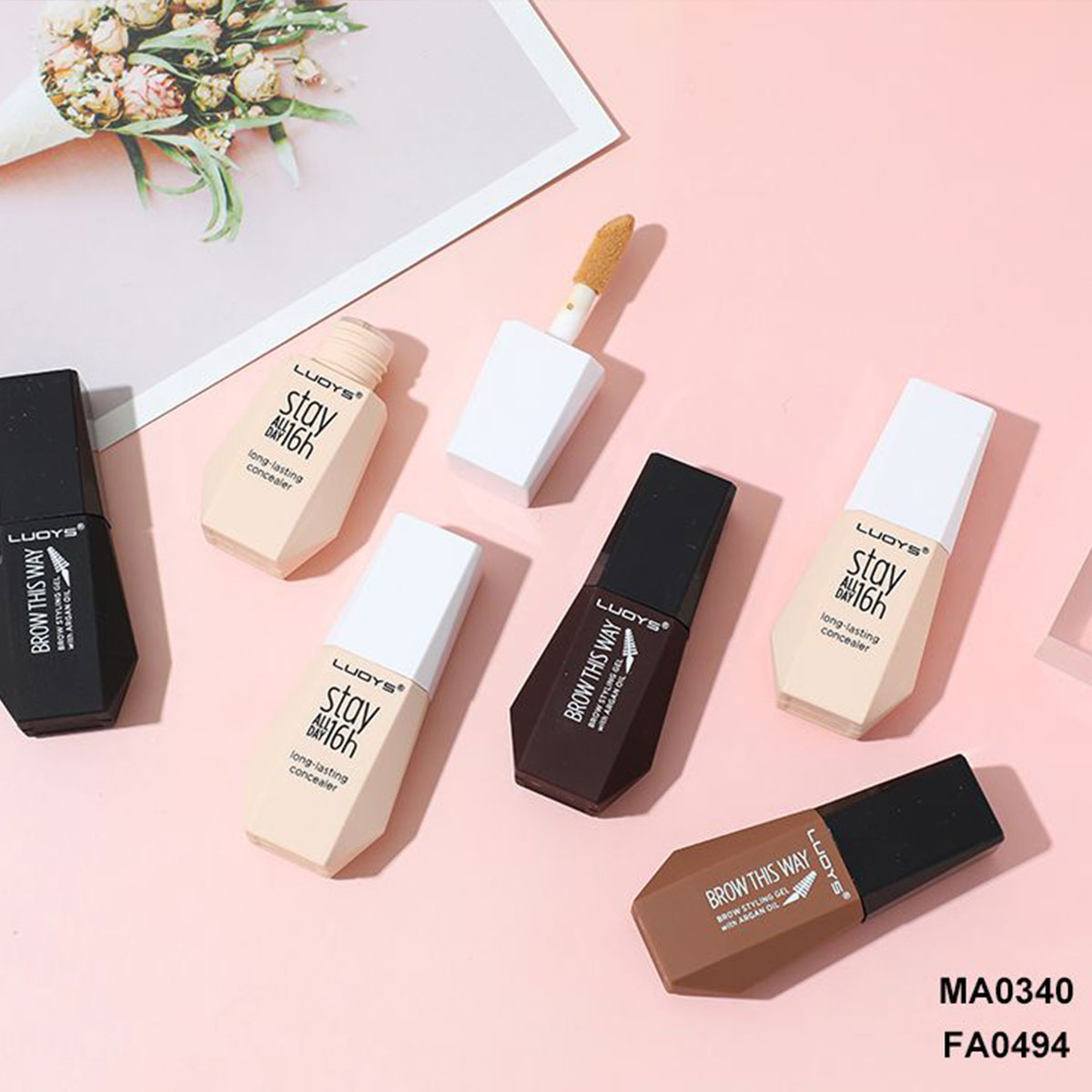The Future of Lines: Top Eyeliner Trends for 2025 (And How to Manufacture Them)

Introduction
Eyeliner has always been one of those products that carry more weight than people think. It is not just about drawing a simple line near the lashes. It changes the shape of the eye, it highlights expressions, and in many cultures, it even works as a small symbol of identity. For manufacturers and distributors, eyeliner is not a side category. It sits right in the middle of competitive cosmetics, where design and formula can quickly make or break sales.
As we step closer to 2025, the eyeliner world is shifting again. The “future of lines” is not just a nice phrase—it describes a wave of changes that combine new looks, better formulas, and smarter production. Customers now want more precision, stronger wear, eco-friendly packaging, and sometimes even products that do more than one job.
This article takes a deep look at the top eyeliner trends shaping 2025. It also explains how to actually manufacture these products in ways that meet modern market needs.
Precision and Ultra-Fine Tips
The first big trend is precision. Consumers are moving away from thick, clumsy applicators. What they want instead are ultra-fine tips. A tip that can draw thin, clean strokes allows them to shape their eyes without looking too heavy. It’s especially popular in Asian markets, where natural beauty styles stay strong. Professionals also value this feature because editorial makeup often requires very sharp, hairline strokes.
From a production side, building these tips is tricky. Felt tips have to stay firm but not rock hard. Brush tips need to deliver a smooth flow of ink without splitting apart. The ink itself plays a role too. If the formula runs too fast, it smears. If it is too thick, it dries on the tip before reaching the lid. Packaging design also matters. An airtight cap that really seals is what keeps a pen usable for months instead of weeks.
Think about a consumer rushing out the door before work. She doesn’t have time to shake or fix her liner. If it fails on the first stroke, she won’t buy the same product again. That little detail shows why fine-tip technology is so important for brands trying to build trust.
Bold Graphic Lines and Colors
On the other side of the spectrum, we see bold lines making waves. Eyeliner is no longer just a frame for the eyes. For younger buyers, it has become a statement piece. Gen Z especially treats makeup as a creative canvas. A wing extended past the brow or a neon stripe across the lid can be the highlight of a social media post.
Metallics, neon greens, and cobalt blues are no longer limited to runway shows. They’re entering mainstream collections. The reason is simple: they look striking on camera. In a world where selfies and short videos dominate, a bold line instantly grabs attention.
For factories, this adds a layer of difficulty. Pigments must be bright but also safe. Some shades fade faster under light, so stability testing is essential. Black and brown still dominate volume sales, but buyers now expect a palette that includes both safe basics and flashy options. Manufacturers need production systems that can quickly shift between large-volume runs and smaller, trendy batches.
Imagine a retailer launching a “limited summer color” collection. They may only need 20,000 units of a metallic blue. A supplier that can handle that small run without slowing the main production line gains a huge competitive edge.
Waterproof and Long-Wear Formulas
Durability has gone from being a “nice extra” to an absolute expectation. People want eyeliner that can last through heat, humidity, and even an accidental splash of water. In hot climates, it’s not just about looking pretty—it’s about confidence. A liner that smudges halfway through the day leaves consumers frustrated.
Middle Eastern markets and tropical regions show the strongest demand here. But even in cooler countries, professionals and event-goers lean toward long-wear formulas. Weddings, concerts, and long workdays all create demand for products that stay put.
For manufacturers, this means using advanced film-forming agents and emulsions. Stability tests must push formulas through both high heat and cold storage. That way, when products reach the customer, they perform the same in real life as they do in lab tests.
It may sound technical, but here’s the reality: when a consumer buys a “waterproof” eyeliner and it runs after two hours, the brand loses credibility instantly. That is why production teams must get this step right.
Sustainable and Clean Label Eyeliner
The conversation around beauty has shifted. Consumers are not just asking how eyeliner looks. They are asking how it is made, what ingredients are used, and how the package will be thrown away. In Europe, especially, the demand for vegan, cruelty-free, and recyclable products is rising quickly.
Some brands now use refillable cartridges. Others experiment with biodegradable caps or eco-friendly inks for labels. On the formula side, plant-based waxes and natural pigments are being tested. The challenge here is performance. A “clean” formula still needs to glide smoothly, dry evenly, and stay long enough to satisfy users.
For manufacturers, adjusting production lines to meet these requests is not optional anymore. It’s becoming a standard. Governments are also tightening regulations. So, suppliers that adapt faster not only attract eco-conscious buyers but also avoid compliance issues down the road.
I once heard a buyer mention that her customers checked the recycling symbol before looking at the shade. That small shift in behavior says a lot about how important clean label has become.
Smart Hybrid Products
Another upcoming trend is hybrid products. Eyeliner that doubles as a lash serum. Pens that transform into shadow sticks. Consumers appreciate multi-tasking items that reduce the number of products in their bags.
These products answer two modern demands: efficiency and wellness. People want to save time in their morning routines. At the same time, they like the idea of using products that provide some care benefit, not just color.
For factories, this adds serious complexity. Active ingredients like peptides or botanical extracts must blend well with cosmetic pigments. R&D teams have to make sure nothing separates, clogs the tip, or irritates the skin. Testing stretches far beyond basic wear—it now includes safety checks for long-term use.
Though still new, hybrid designs are gaining traction. With wellness and beauty moving closer together, it is likely this category will expand quickly in the coming years.
Eyeliner Trend Comparison
|
Trend |
Where It’s Popular |
What Consumers Want |
Production Notes |
|
Ultra-Fine Precision |
Asia, Professional Users |
Natural, subtle lines |
Durable tips, airtight caps |
|
Bold Graphics |
North America, Gen Z |
Artistic, colorful strokes |
Stable pigments, batch flexibility |
|
Waterproof & Long-Wear |
Middle East, Tropics |
Reliability, sweat-proof |
Film-forming agents, stability testing |
|
Sustainable & Clean |
Europe, Global niche |
Eco-friendly, vegan options |
Natural waxes, recyclable packaging |
|
Hybrid Products |
Emerging everywhere |
Multi-use, wellness appeal |
Advanced R&D, safety validation |
How to Manufacture for 2025 Trends
Building eyeliner that fits these demands takes planning at every level. It starts with raw materials. Suppliers must be reliable and certified. Each new material should pass microbiological checks and heavy metal testing. Only after that can it enter production.
R&D is the backbone. Every formula must be tested for safety, stability under hot and cold conditions, and preservative effectiveness. A single weak spot can ruin an entire batch.
Infrastructure also plays a role. Automatic filling machines, advanced labeling systems, and precise applicator equipment allow factories to run both large and small orders smoothly.
Finally, quality control keeps everything consistent. Random samples need to be tested for color, flow, and packaging performance. This ensures that every eyeliner reaching a shelf matches the promise on its label.
Limei Cosmetics: A Reliable Eyeliner Supplier

Among manufacturers prepared for these shifts, Limei Cosmetics is a strong name. Founded in 1993 and based in Yiwu, Zhejiang Province, the company brings decades of experience in cosmetics production.
The facility covers about 20,000 square meters and employs more than 300 staff. This includes experienced R&D specialists and strict quality inspectors. Limei holds major certifications, such as FDA, EEC, and ISO22716, making its products suitable for both U.S. and European markets.
For eyeliners, production capacity is high. Monthly output for mascaras and liquid eyeliners reaches 1,000,000 units. Clients can choose between OEM and ODM services, with full customization for formulas, applicators, and packaging.
Global distribution adds another layer of trust. About 50% of its market is in the United States, 30% in Europe, and the rest spread across the Middle East, Africa, and Asia-Pacific.
What stands out most is Limei’s focus on testing. Each eyeliner formula undergoes safety assessments, stability checks under different conditions, and preservative trials before mass production begins. That commitment gives buyers peace of mind when launching in competitive markets.
Conclusion
By 2025, eyeliner will not be defined by a single look. It will be defined by variety and innovation. Ultra-fine tips will attract those who love clean precision. Bold graphics will inspire those chasing artistic freedom. Waterproof formulas will satisfy people in warm climates. Eco-friendly designs will win the hearts of conscious buyers. And hybrid products will connect beauty with wellness.
For businesses, success means matching the right product to the right audience. For manufacturers, success means keeping production flexible but reliable. With partners like Limei Cosmetics, brands gain not just a supplier but a collaborator that brings both scale and safety to every project.
FAQs
What are the leading eyeliner trends for 2025?
They include ultra-fine precision tips, bold graphic colors, waterproof and long-wear formulas, sustainable products, and hybrid eyeliners that combine makeup with care functions.
How can manufacturers prepare for the future of lines in eyeliner?
They can start with strong raw material sourcing, thorough testing, and automated equipment. Each step helps secure formulas that match what consumers expect in performance and safety.
Are sustainable eyeliners harder to make?
Yes, slightly. Natural waxes and recyclable packaging can be harder to handle in production. But consumer demand is strong, and many are willing to pay more for eco-friendly products.
Which regions need waterproof eyeliner the most?
Markets in the Middle East and tropical climates demand it most, since high heat and humidity make long-wear formulas essential.
How does Limei Cosmetics support clients in eyeliner production?
Limei offers OEM and ODM services, with formula customization, packaging options, and certified quality systems. Their monthly eyeliner output reaches one million units, which makes them reliable for global buyers.


